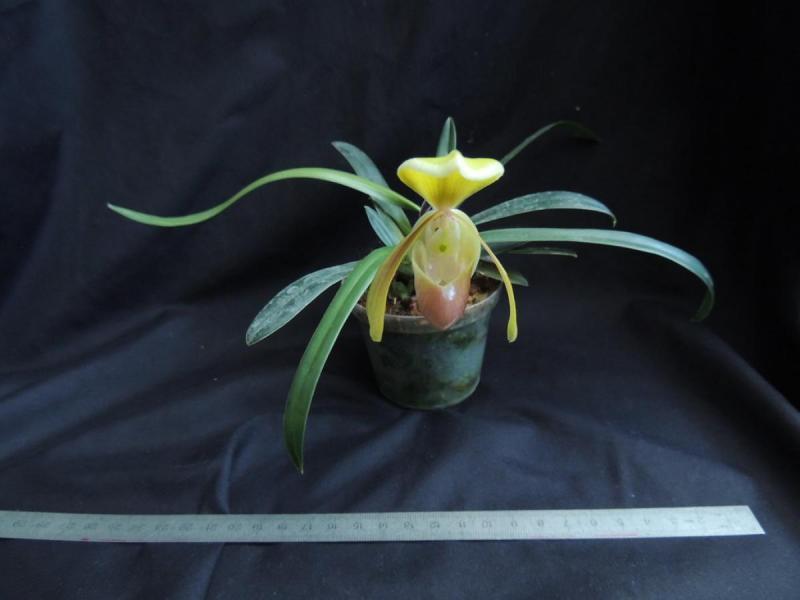Paphiopedilum helenae
Also known as: Ellen's Paphiopedilum or Paphiopedilum helenae h.f. album Paphiopedilum helenae var. peschutteri Paphiopedilum helenae h.f. delicatum Paphiopedilum helenae h.f. tipo Paphiopedilum helenae f. aureum Paphiopedilum delicatum in the subfamily: Cypripedioideae
Native to: China
General Information
Ellen's Paphiopedilum is a small cool to warm growing lithophytic orchid belonging to the sub family Cypripedioideae native to China. It is named after the Ellen Wilson, American Orchid Enthusiast.
Plant Description
Each new growth has numerous thick rigid, lance shaped, oblong shaped leaves that grow to 1-12cm long
Substrate(s)
- Coarse
- Spaghnum Moss
Care Notes
These orchids like to be kept on the dry side, but may need to be watered daily during warm weather, and prefer a well draining mix or also do well mounted, provided they can be watered regularly.
These are quite a forgiving orchid, there are no special requirements to get this orchid to flower, just good care and consistent conditions. Larger plants may be more fussy and can react poorly to change; a poorly timed repotting, a pest infection or an unusually hot day can set them back for a couple of years. However, even plants that have been treated poorly can thrive, and if they are set back they often recover much stronger then they would otherwise be.
Climate
Grows at low to high elevations. Rainfall ranges from 13mm to 284mm per day, heaviest in August and lightest in January. Humidity ranges from 76% to 85%, highest in August and lowest in January. Temperature ranges from 6C to 28C, highest in June (20C to 28C) and lowest in January (6C to 14C).
Fertiliser
Apply liquid based fertiliser per recommended directions. They can benefit from a high phosphate fertiliser leading up to flowering season, followed by a high nitrogen fertiliser when new growth appears, and a balanced fertiliser in other times. These orchids can also tolerate slow release fertiliser applied 1-2 pellets per cup (250ml) of media.
Apply fertiliser regularly at half strength year round. Use a high Nitrogen fertiliser during Spring and Summer. Use a high Phosphorous fertiliser during Summer.Potting
Due to the growth nature of these plants they are best mounted onto cork, tree fern slabs, or even trees if the climate suits. Water regularly especially in hot weather.
This plant does well mounted. Repotting is best done annually.







